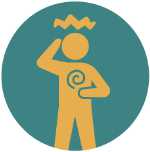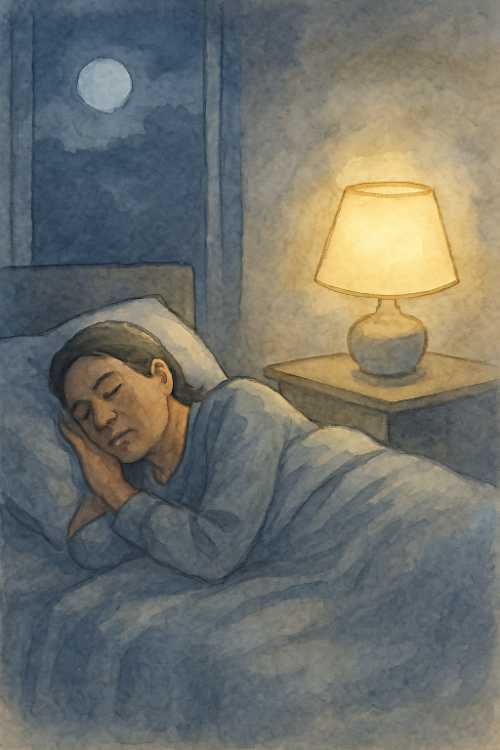Acupressure Points for Emotional Balance
Traditional Chinese Medicine (TCM) views emotional health as a reflection of internal harmony among the organs and the smooth circulation of qi and blood. Disruptions to this balance—due to stress, trauma, overwork, or constitutional weakness—can lead to emotional disturbances such as anxiety, irritability, sadness, or restlessness. Acupressure, a technique derived from acupuncture, allows individuals to stimulate specific points using gentle finger pressure to promote emotional stability without needles or medication.
The mechanism of acupressure involves stimulating points along meridians to regulate the nervous system, balance organ function, and restore the flow of qi. While a full acupuncture treatment may include complex point combinations based on differential diagnosis, a focused acupressure approach can still yield meaningful results, especially when used regularly. Below are several key points frequently used to calm the shen, release Liver stagnation, and support the Heart and Kidneys.
HT7 (Shénmén, Spirit Gate)
 Located on the wrist crease, on the radial side of the flexor carpi ulnaris tendon, HT7 is one of the primary points to calm the mind. It nourishes Heart blood and anchors the spirit. In modern neurophysiological studies, stimulating HT7 has been shown to modulate activity in areas of the brain associated with emotion and sleep regulation. It is especially helpful for anxiety, panic, and insomnia.
Located on the wrist crease, on the radial side of the flexor carpi ulnaris tendon, HT7 is one of the primary points to calm the mind. It nourishes Heart blood and anchors the spirit. In modern neurophysiological studies, stimulating HT7 has been shown to modulate activity in areas of the brain associated with emotion and sleep regulation. It is especially helpful for anxiety, panic, and insomnia.
PC6 (Nèiguān, Inner Pass)
Found about two finger-widths above the wrist crease between the tendons of palmaris longus and flexor carpi radialis, PC6 is well known for its ability to regulate both the Heart and Stomach. It is often used for anxiety accompanied by nausea or chest tightness. In TCM theory, PC6 opens the chest and harmonizes the emotions. Its connection to the Pericardium channel gives it a protective effect on the Heart, particularly useful when emotional distress feels overwhelming.
Yintang (Hall of Impression)
Located between the eyebrows, Yintang is not on a standard meridian but is widely used to calm the shen and relieve tension. It is especially effective for frontal headaches, agitation, and restlessness. Pressing Yintang with the fingertip in gentle, circular motions for 1–2 minutes can quickly relieve mental tension and promote clarity.
Liver 3 (Tàichōng, Great Surge)
Located on the dorsum of the foot between the first and second metatarsal bones, LV3 is a primary point for moving stagnant Liver qi. Because emotional repression and frustration are linked to Liver qi stagnation, this point is commonly used in the treatment of irritability, mood swings, and premenstrual tension. It is often paired with LI4 (Hégǔ) to create the “Four Gates,” enhancing the movement of qi throughout the body.
Kidney 1 (Yǒngquán, Gushing Spring)
Found on the sole of the foot, in the depression between the ball of the foot and the base of the toes, KD1 is the lowest point on the body. It is used to anchor the spirit and draw overactive energy downward. In cases of agitation, panic, or emotional ungroundedness, KD1 helps restore calm by connecting the individual back to the earth element and stabilizing the Kidney system.
Acupressure offers a safe, non-invasive method of emotional regulation. Its effects accumulate over time, especially when used as part of a broader TCM-based self-care routine that may include breathing practices, herbal support, or dietary adjustments. Each point is best pressed with steady, gentle pressure for 1–2 minutes, ideally on both sides of the body, using the index or middle finger. Practicing mindfulness or slow breathing while pressing can enhance the effect.
Vocabulary Guide
- Qi (气): Vital energy that circulates through the body along meridians
- Shen (神): Spirit or consciousness housed in the Heart
- HT7 (神门 Shénmén): Calms the mind, nourishes Heart blood
- PC6 (内关 Nèiguān): Opens the chest, calms anxiety, harmonizes digestion
- Yintang (印堂): Calms the spirit, used for tension and agitation
- LV3 (太冲 Tàichōng): Moves Liver qi, relieves emotional frustration
- LI4 (合谷 Hégǔ): Paired with LV3 to promote circulation of qi
- KD1 (涌泉 Yǒngquán): Grounds overactive energy, calms panic





